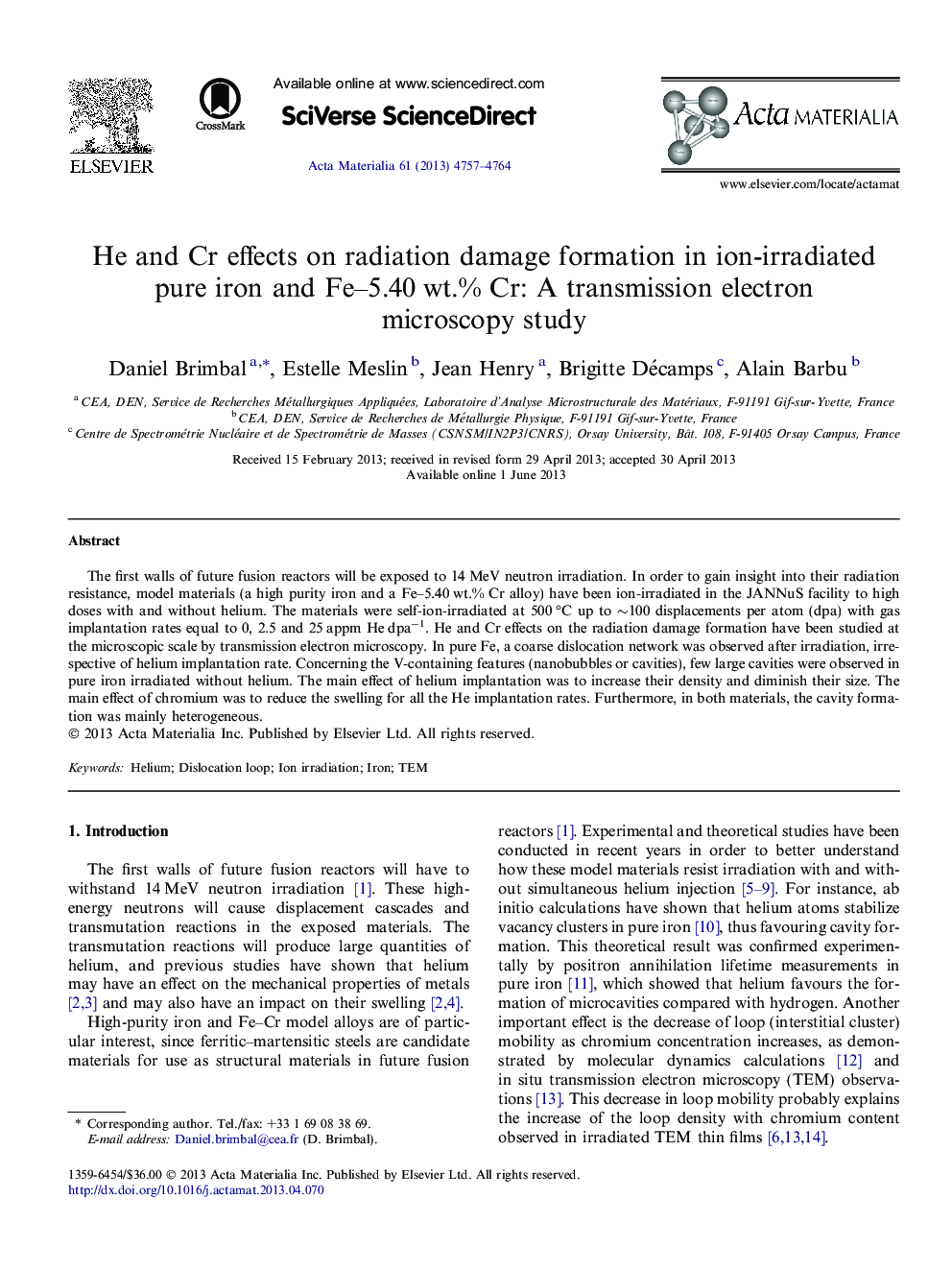| Article ID | Journal | Published Year | Pages | File Type |
|---|---|---|---|---|
| 1446252 | Acta Materialia | 2013 | 8 Pages |
The first walls of future fusion reactors will be exposed to 14 MeV neutron irradiation. In order to gain insight into their radiation resistance, model materials (a high purity iron and a Fe–5.40 wt.% Cr alloy) have been ion-irradiated in the JANNuS facility to high doses with and without helium. The materials were self-ion-irradiated at 500 °C up to ∼100 displacements per atom (dpa) with gas implantation rates equal to 0, 2.5 and 25 appm He dpa−1. He and Cr effects on the radiation damage formation have been studied at the microscopic scale by transmission electron microscopy. In pure Fe, a coarse dislocation network was observed after irradiation, irrespective of helium implantation rate. Concerning the V-containing features (nanobubbles or cavities), few large cavities were observed in pure iron irradiated without helium. The main effect of helium implantation was to increase their density and diminish their size. The main effect of chromium was to reduce the swelling for all the He implantation rates. Furthermore, in both materials, the cavity formation was mainly heterogeneous.
